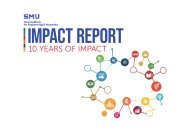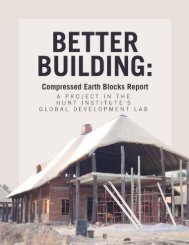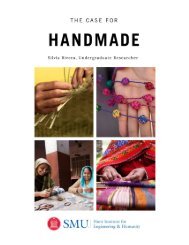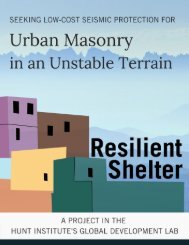Assessment of Rwanda Refugee Camps in the Context of the Villagization Process
Undergraduate researcher for the Hunt Institute for Engineering and Humanity and Engaged Learning Fellow Sienna Dugan, researched secondary sources and primary research through site visits, participatory observation, and interviews with key informants to compile this report which is structured like a case study with additional literature review. All photography is original to the student from her in-field research.
Undergraduate researcher for the Hunt Institute for Engineering and Humanity and Engaged Learning Fellow Sienna Dugan, researched secondary sources and primary research through site visits, participatory observation, and interviews with key informants to compile this report which is structured like a case study with additional literature review. All photography is original to the student from her in-field research.
Create successful ePaper yourself
Turn your PDF publications into a flip-book with our unique Google optimized e-Paper software.
3.1.1 Characteristics of the Overall Population as of August 2019:
Refugees seeking asylum in Rwanda are primarily from Burundi and subsequently the
Democratic Republic of Congo. Divided into 6 refugee camps which include: Mahama, Kigeme,
Gihembe, Kiziba, Nyahiheke, and Mugombwa, the population of these camps totals 149,297
individuals as of August 2019. The five primary camps are composed of migrants from the
Democratic Republic of Congo where the 56,238 people from Burundi make up the Mahama
Camp (see Figure 4). Recorded at 51%, over half of the population of these camps are currently
between the ages of 0 and 17 and 45% of the population are between the ages of 18 and 59.
Although the female to male ratio is 52:48, women and children make up 76% of the camps.
The numbers of refugees and asylum seekers seeking shelter in these camps continues to rise
with the recent surge of violence and other forms of abuse by armed groups in the Eastern
Democratic Republic of Congo, and in Burundi the presence of the terrorist group Imbonerakure,
human rights violations, and political unrest.7 With the deterioration of security inside the DRC,
UNHCR expects 10,000 new arrivals in 2018, bringing the population of the Congolese refugees
to 85,000. As of May 2018, 5,121 Burundian refugees had entered Rwanda that year, bringing
the total population of Burundians to 90,562. The current population statistics, crude mortality
7 “Participatory Assessment (PA) - UNHCR Rwanda.” UNHCR, Dec. 2017, www.unhcr.org/rw/12968-2.
14














